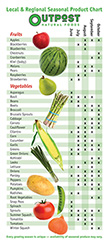Fermenting vegetables not only increases their shelf life, but it also enhances their flavor and increases their nutritional value! Sauerkraut (fermented cabbage) is full of live enzymes and bacteria that improve digestion and heal a damaged gut. Eating fermented foods with your meals may help you absorb nutrients more efficiently and adds a wonderful new taste to your food!
3 pounds cabbage (about 1 medium head)
4 teaspoons sea salt
2 tablespoons caraway seeds, optional
1. Shred the cabbage and place in a large bowl.
2. Sprinkle with salt (taste to ensure it is not too salty or under-salted; adjust to taste) and mix well.
3. Begin to crush the cabbage with your hands and “massage” it to begin releasing the water.
4. Let sit 15 minutes to let the cabbage begin to soften. Taste for saltiness. If it is not salty enough to your taste, add a little more salt. If it is too salty, either add more cabbage or rinse in a colander with water. The saltiness will not change during fermentation, so get it to taste now so you will like the end result!
5. Add caraway seeds, if using, and mix well.
6. Transfer to a fermenting crock or glass jar.
7. Using a wooden dowel or a wooden spoon, begin to pound the cabbage. The cabbage should be softened and a good amount of brine should be present.
8. Press the cabbage firmly into the jar so the brine rises above it.
9. Place a weight on top of the vegetables, ensuring that they stay submerged in brine the whole time they ferment to prevent oxygen from getting in—the bacteria you are wanting here are anaerobic.








